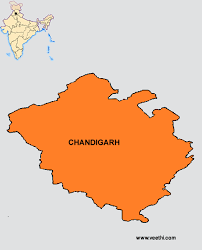04 Apr 2022 Chandigarh: Punjab and Haryana

Chandigarh: Punjab and Haryana – Today Current Affairs
- Recently the Chief Minister of Punjab introduced a resolution in the Vidhan Sabha, demanding immediate transfer of Chandigarh to Punjab.
- The long-running dispute between Punjab and Haryana over Chandigarh escalated when the Center notified Central Service Rules instead of Punjab Service Rules for employees in the Union Territory.
- Punjab was reorganized through the Punjab Reorganization Act, 1966, in which the state of Punjab was merged with Haryana and the Union Territory of Chandigarh (also the joint capital of Punjab and Haryana) and parts of Punjab into the erstwhile Union Territory of Himachal Pradesh.
Today Current Affairs
When and how did Chandigarh become the capital of Punjab?
- After the partition of India, the Indian government wanted a beautiful and modern capital for Punjab in India like Lahore. It was at this time that the idea of Chandigarh was conceived.
- In the year 1966, the state was divided into Punjab and Haryana, parts of which came under Himachal Pradesh.
- Chandigarh remained the capital of Punjab till the formation of Haryana State.
- During the reorganization of Punjab, the central government had announced that the state of Haryana would get its own capital.
- In the year 1970, the Center announced that “Chandigarh Capital Project Area should go to Punjab as a whole”.
- Haryana was asked to use office and residential accommodation in Chandigarh for five years till it becomes its capital.
- However, Chandigarh remained a Union Territory as Haryana did not make it its capital.
- As per the Punjab Capital (Development and Regulation) Act, 1952, properties in Chandigarh were to be divided between Punjab and Chandigarh in the ratio of 60:40.
What were the claims made on Chandigarh later? The Hindu Analysis
- In August 1982, the Akali Dal (political party), expressing dissatisfaction with the Punjab Reorganization Act, launched a protest aimed at realizing the goals of the 1973 Anandpur Sahib Resolution.
- The Anandpur Sahib Resolution adopted by the Akali Dal in 1973 demanded that the jurisdiction of the Center should be restricted to defence, foreign affairs, communication and currency and all residuary powers should be vested in the states.
- Among other demands, it asked for the transfer of Chandigarh to Punjab.
- Rajiv-Longowal Pact was signed in 1985 between the then Prime Minister Rajiv Gandhi and Akali leader Harchand Singh Longowal.
- The Central Government, among other things, agreed to transfer Chandigarh to Punjab and the date of actual transfer was fixed on 26 January 1986.
- However, less than a month after the signing of the agreement, Longowal was assassinated by terrorists.
What are union territories and how are they different from states? The Hindu Analysis
- Union Territories (UTs) are directly governed by the Central Government.
- Part VIII of the Constitution deals with the administration of Union Territories.
- The President of India appoints an Administrator or Lieutenant Governor for each Union Territory. In practice this means that the Union Territories obey the will of the Central Government.
- The concept of Union Territories was not there in the original version of the Constitution, but it was added by the Constitution (Seventh Amendment) Act, 1956.
- Union Territories are governed in different ways depending on whether they have a legislature or not.
- Smaller union territories are administered directly by the central government, for example Chandigarh, Daman and Diu and Dadra and Nagar Haveli are union territories without any elected legislature.
- Puducherry and Jammu and Kashmir, on the other hand, have a Legislative Assembly and elected government with a Lieutenant Governor. The situation in New Delhi is completely different and it exists between a Union Territory and a State. Today Current Affairs
- According to Article 3 of the Constitution of India, the constitutional power to create new states and union territories in India rests entirely with the Parliament of India.
- Parliament can do this by declaring new States/UTs, separating a specific region from the existing State or merging two or more States/UTs or parts thereof.
Here we mention all information about Chandigarh: Punjab and Haryana – Today Current Affairs.


No Comments